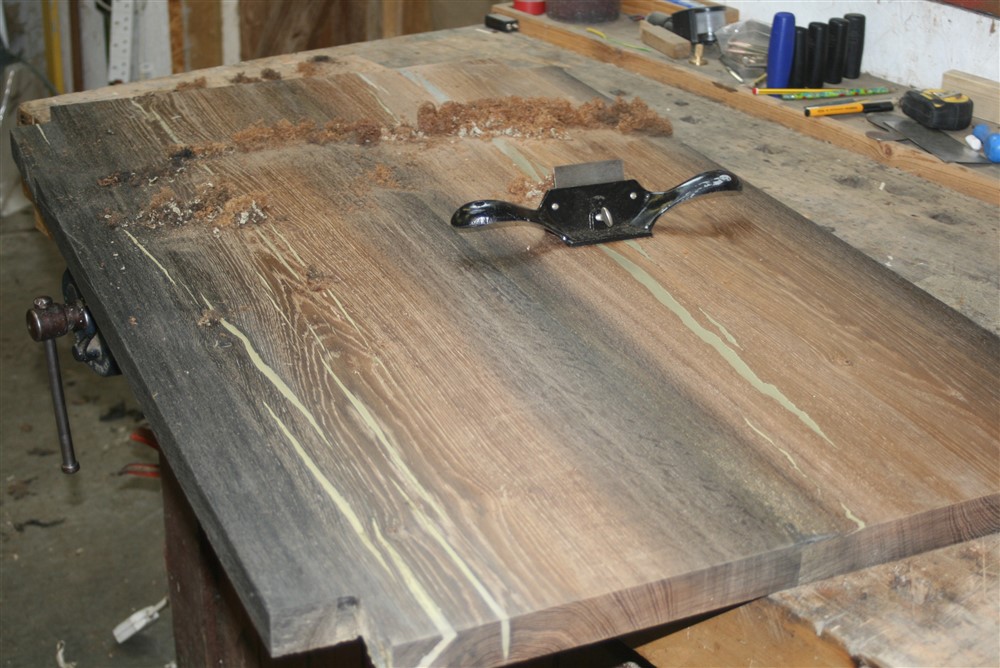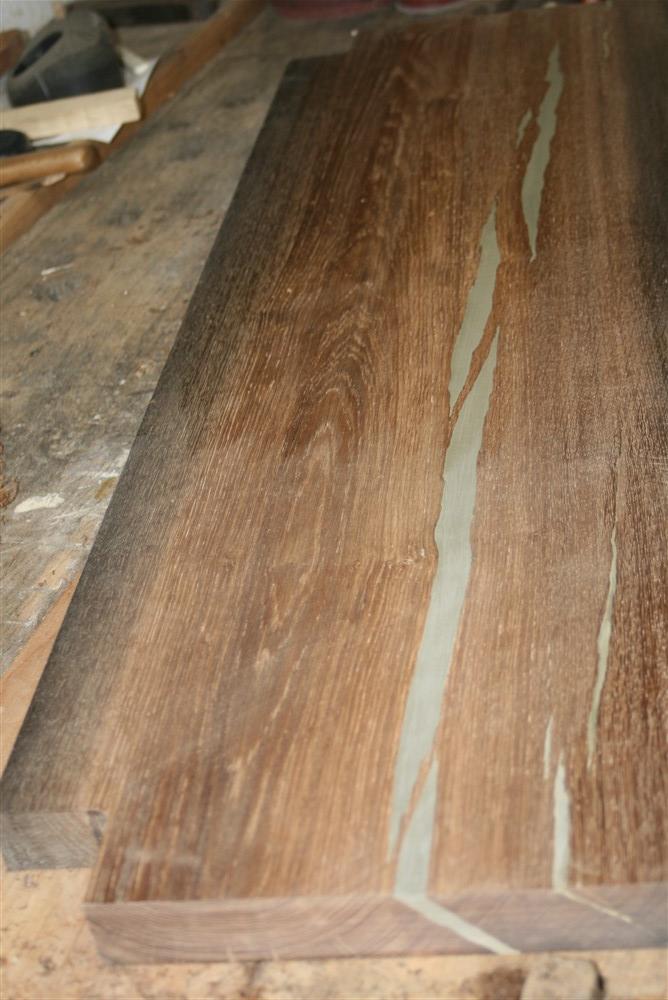The No80 scraper plane seems to be a tool that few people use judging by the prices on auction sites. I personally find it an extremely useful tool, and one that I reach for often. I’m curious why people don’t seem to value and use them?
For me, a scraper plane (not just the No80) can be used instead of a normal plane for wood that has wild grain pattern as it won’t cause tear out. Card scrapers can also be used, but you quickly end up with sore thumbs if your doing a fair bit of it. However, a scraper plane isn’t just for wild grain, it’s just as happy on well behaved grain. I find that the amount of physical effort is significant less with a scraper plane for the same size shaving as it is with a normal plane (bevel up or down). I also find that they stay cutting for longer than a normal plane between sharpening.
The depth of cut can be varied which is achieved by bending the blade with a thumb screw on the back. You don’t have to worry about the blade being knocked out of alignment by a hard bit within the wood (knot for example) creating tram lines due to the edges of the blade catching.
I’m not going down the rabbit hole of how to sharpen the blade, apart from saying that it’s actually very easy, and more forgiving than sharpening a standard blade.
The finish they produce isn’t quiet as good as a well tuned and sharpened plane, but it’s a very close second. It is far superior IMO to that of sandpaper, as it does have a nice gleam, just a shade duller than you get from a plane.
I’m knocking up a sink unit for my workshop out of material I have lying around, and to make it have been using the No80 to finish off edging the MDF and Ply with what ever hard wood I have.

I like to edge sheet material with a good thick bit of hardwood, I find that the units last far longer as all the abuse happens on the edge.
The scraper is ideal for levelling off the applied hardwood without damaging the edge of the sheet material. It also knocks off all of the glue that has run down......I don’t bother wiping it off as I glue up as it’s easier to use the scraper to remove it!
The picture is of the roughly cut edge, the hardwood is actually fitted exactly to the V cut into the sheet material.
For me, a scraper plane (not just the No80) can be used instead of a normal plane for wood that has wild grain pattern as it won’t cause tear out. Card scrapers can also be used, but you quickly end up with sore thumbs if your doing a fair bit of it. However, a scraper plane isn’t just for wild grain, it’s just as happy on well behaved grain. I find that the amount of physical effort is significant less with a scraper plane for the same size shaving as it is with a normal plane (bevel up or down). I also find that they stay cutting for longer than a normal plane between sharpening.
The depth of cut can be varied which is achieved by bending the blade with a thumb screw on the back. You don’t have to worry about the blade being knocked out of alignment by a hard bit within the wood (knot for example) creating tram lines due to the edges of the blade catching.
I’m not going down the rabbit hole of how to sharpen the blade, apart from saying that it’s actually very easy, and more forgiving than sharpening a standard blade.
The finish they produce isn’t quiet as good as a well tuned and sharpened plane, but it’s a very close second. It is far superior IMO to that of sandpaper, as it does have a nice gleam, just a shade duller than you get from a plane.
I’m knocking up a sink unit for my workshop out of material I have lying around, and to make it have been using the No80 to finish off edging the MDF and Ply with what ever hard wood I have.

I like to edge sheet material with a good thick bit of hardwood, I find that the units last far longer as all the abuse happens on the edge.
The scraper is ideal for levelling off the applied hardwood without damaging the edge of the sheet material. It also knocks off all of the glue that has run down......I don’t bother wiping it off as I glue up as it’s easier to use the scraper to remove it!
The picture is of the roughly cut edge, the hardwood is actually fitted exactly to the V cut into the sheet material.





































